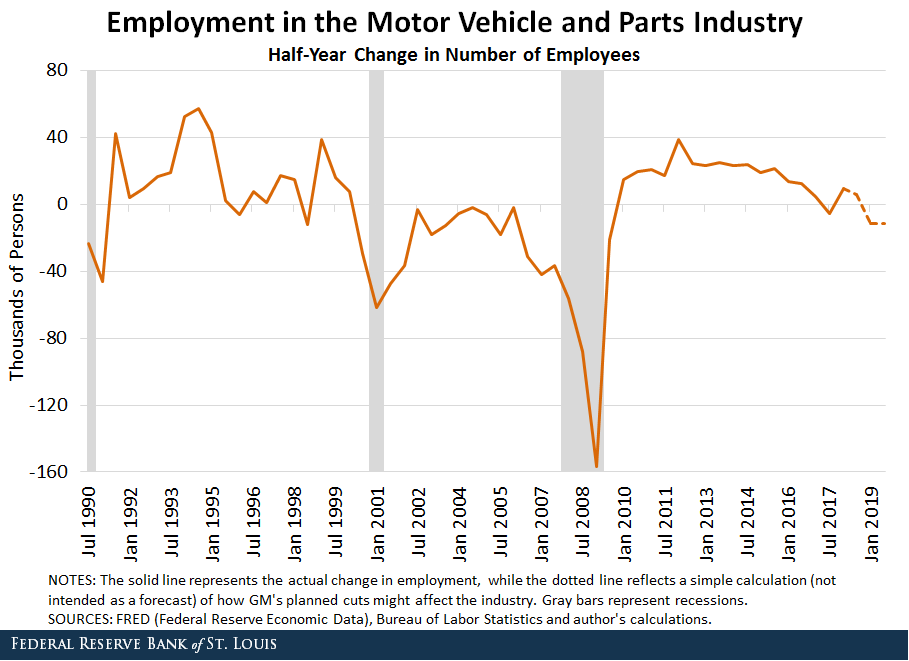Putting the GM Job Cuts into Broader Perspective

General Motors recently announced that it would reduce salaried and salaried contract staff by 15 percent. This includes ceasing productions at two U.S. assembly plants: one in Detroit and one in Warren, Ohio. Since the company currently employs about 101,500 workers in the U.S., a 15 percent reduction would result in a loss of approximately 15,200 jobs. Note that my calculation, which is computed as 15 percent of 101,500 jobs, differs slightly from numbers being reported in some media outlets, which suggest a reduction of around 14,000 jobs.
This blog post places the projected GM job losses into the broader perspective of the historical record of employment change in that industry. The solid line in the figure below plots the change in total employment in the motor vehicle and parts industry over the past 30 years, which is compiled by the Bureau of Labor Statistics. The change in employment is calculated over six-month intervals (i.e., the first half or the second half of each calendar year).

There are notable aspects of the graph:
- First, the preceding eight years have seen almost continual growth in the sector with a cumulative increase of 306,000 jobs.
- Second, large swings in the industry's employment are not uncommon. Preceding the last recession, employment grew or fell by more than 10,000 jobs in 23 of the total 35 half-year periods.
The dashed line in the figure reflects a simple calculation (not intended as a forecast) of how the GM decision might affect this industry. The calculation is based on the following assumptions:
- First, assume that the 15,200 GM jobs are split over the next two consecutive half-year periods.
- Second, suppose that for every two GM jobs lost, there is one additional job lost contemporaneously, potentially from firms within the motor vehicle and parts industry that rely on GM.
- Third, suppose that there are no other changes in employment (besides those described above) between now and the end of 2019.
The GM job restructuring plan, together with the back-of-the-envelope assumptions on how other jobs in the industry might be affected, implies a significant decline in employment. However, the job losses are not nearly as large as those that occurred during or preceding the previous three recessions.
Notes and References
1 Note that my calculation, which is computed as 15 percent of 101,500 jobs, differs slightly from numbers being reported in some media outlets, which suggest a reduction of around 14,000 jobs.
Additional Resources
- On the Economy: How Has Trade Affected U.S. Manufacturing Jobs?
- On the Economy: Immigration’s Effect on Future Workforces
- On the Economy: How Tight Is the Eighth District Labor Market?
Citation
Bill Dupor, ldquoPutting the GM Job Cuts into Broader Perspective,rdquo St. Louis Fed On the Economy, Dec. 24, 2018.
This blog offers commentary, analysis and data from our economists and experts. Views expressed are not necessarily those of the St. Louis Fed or Federal Reserve System.
Email Us
All other blog-related questions


